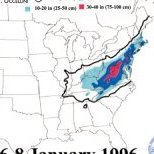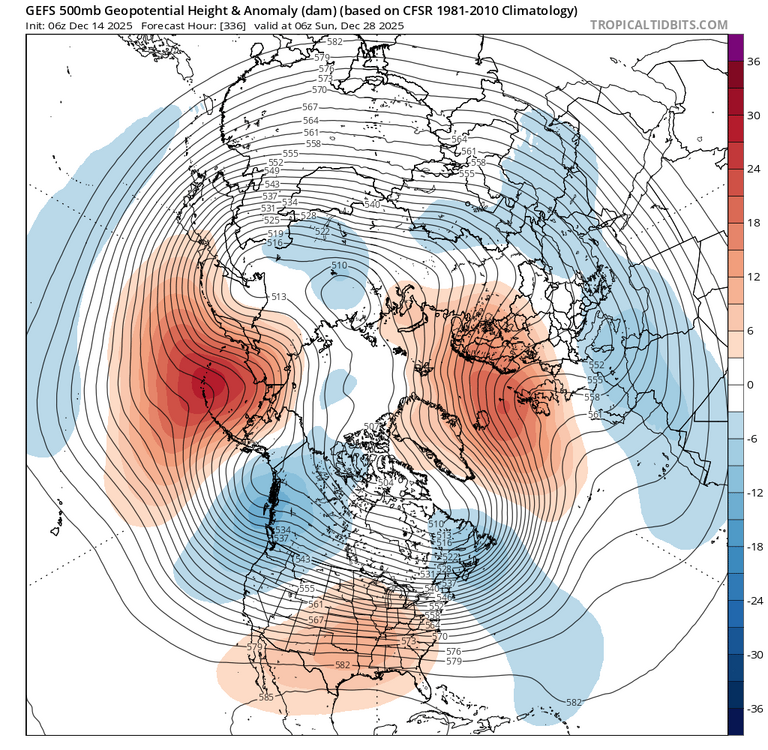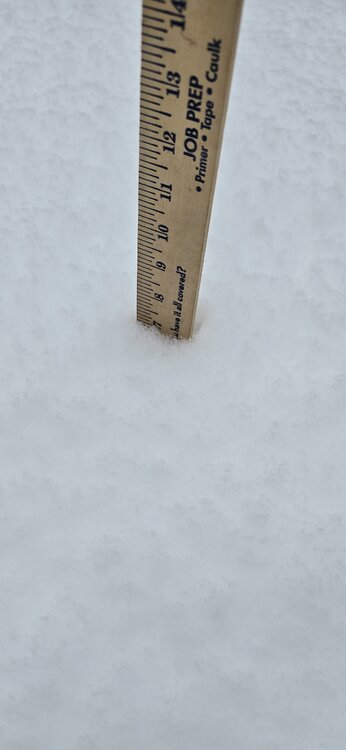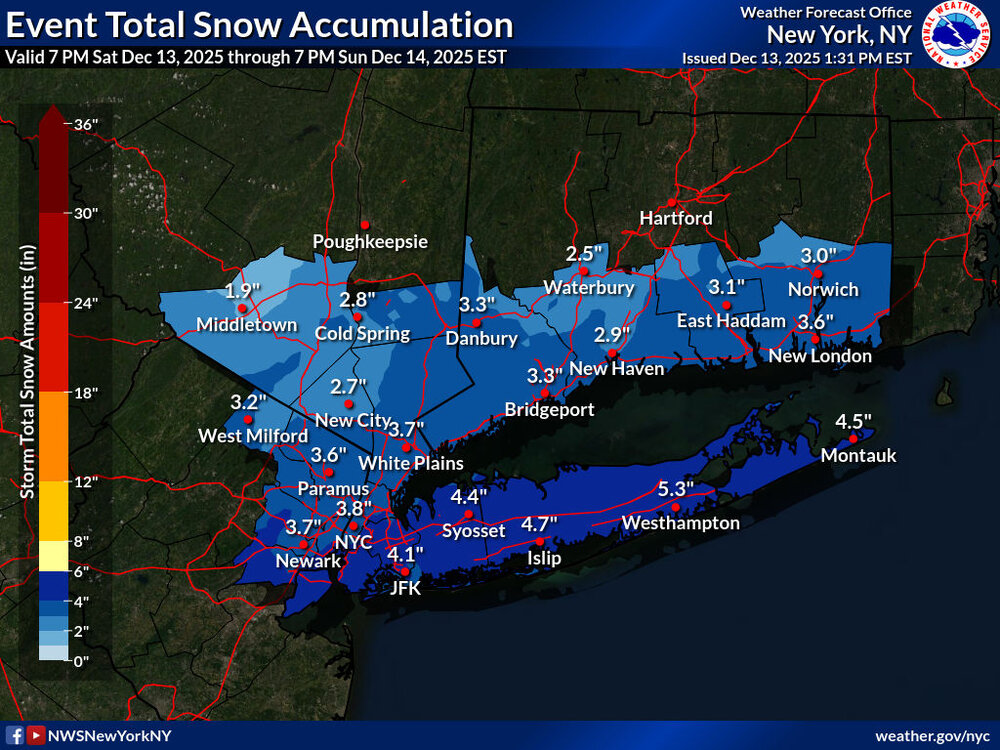-
Posts
8,032 -
Joined
-
Last visited
Content Type
Profiles
Blogs
Forums
American Weather
Media Demo
Store
Gallery
Posts posted by EastonSN+
-
-
33 minutes ago, Sundog said:
Everyone north, south, east and west of them got more snow but hey, the park didn't record 4 inches so it must mean something!
We have to come to terms with the fact that the park is no longer a reliable weather station, whether it's temperatures, wind data or snowfall.
Exactly its now a useless measurement site.
-
 1
1
-
-
5 minutes ago, Sundog said:
I got between 5.5 and 6 inches of snow depth right now in an open area on packed soil (not grass.) I'm in NE Queens.
And I thought I was getting shafted for awhile early this morning.
I have seen video from Central Park and it clearly shows more than 2.7 inches.
And this is why the arbitrary 4 inch measurement record is still alive and well (and why it's also bullshit.)
100% I am not longer considering the 4 inch record as relevant.
-
 1
1
-
-
29 minutes ago, dmillz25 said:
Lol the park with 2.7”
Not even worth tracking theor measurements anymore.
-
 1
1
-
-
Just hit 4.0 inches at Easton CT.
-
 2
2
-
-
Just hit 4.0 inches at Easton CT. Was a little too far north and east.
-
12 hours ago, Krs4Lfe said:
It’s astonishing how quickly winters have changes from the 2010s to the 2020s. This was peanuts a decade ago. This decade; a 4 inch snow storm feels like a lot. Makes me realize how good the 2021 winter was. Only above average snowfall since 2018. 2022 and 2019 were around 20 here in NYC, but the other 4 years were almost complete ratters.
1970 through 1999 I would have considered a large event.
-
-
1 hour ago, Krs4Lfe said:
It is a good pattern but similar to Other good patterns we’ve had past few years there really isn’t much to show for it. Big time cutter coming up
It goes to show that not all good periods produce. I know I have said this at nauseum however this was the norm from 1970 through 1999.
-
Just now, anthonymm said:
Temps overperformed big time before. When I saw it hit 40 in central park I knew there was no way they'd cool down fast enough to have numbers like 4-5" verifying. Cpark needs an arctic antecedent airmass well below 32 for forecasts to verify now...
Last night they were at 37 when north central jersey shore and long Island locations were 34. The HIE has gotten too warm.
-
9 minutes ago, SnowGoose69 said:
They weren’t that far off. I got 1.6 at 9am. I was surprised how much it melted or must have been melting. My guess is they’ll end around 2.1 to 2.4
Can't use central park anymore IMO as a benchmark.
-
 1
1
-
-
16 minutes ago, NorthShoreWx said:
It's not useless. Thanks to this Central Park observation we now know that winter is over.

100% unfortunately people (u know who) will use this as "the new norm" for our area lol.
-
 1
1
-
-
18 minutes ago, FPizz said:
100% so useless as most have been saying. But we will let some have their wet dreams to it and argue to a wall
Agreed. I have finally made a decision to stop tracking the record and using central park as a historical benchmark.
Now I have to find a replacement.
-
 1
1
-
-
13 minutes ago, mob1 said:
They better at least crack the 2" mark when all is said and done.
Why? Its not worth tracking central park accumulations anymore. It no longer holds any relevance to historical data.
-
 1
1
-
-
-
2 minutes ago, Stormlover74 said:
Not unless its 31 or below though the park should still do ok in borderline situations
I think at this point its useless to use the central park measurement a a representation of our area. Major issue from a historical perspective.
-
1 minute ago, [email protected] said:
Keep building those 1500 feet skyscrapers.
What I hate is my whole life central park was the basic representative of the general area both recent and historical.
However at this point it has no relevance for any of the tri state area. North South East or west.
-
3 minutes ago, EastonSN+ said:
Wow lol another storm where literally everywhere else north south east or west did better than NYC. I saw last night they were 37 when even Jersey shore was 34. Heat Island Effect strikes again!
I know the HIE was always there but Central Park seems to no longer be a good representation of the surrounding area.
-
13 minutes ago, MJO812 said:
1.1 inches only in Central Park
LOL
Wow lol another storm where literally everywhere else north south east or west did better than NYC. I saw last night they were 37 when even Jersey shore was 34. Heat Island Effect strikes again!
-
-
Little Christmas miracle on the EURO. 1 to 3 inches, however, in any event not warm.
-
8 minutes ago, donsutherland1 said:
I enjoy all the snow I receive. Even 1 cm is appealing. Nevertheless, when posting statistics, even the ugly data (streak in my post) will be mentioned periodically for purposes of completeness.
Thanks Don. I would imagine Boston must have a similar steak as the snow hole has basically been Philly to Boston.
-
 2
2
-
-
Clippers are obviously no longer "extinct" lol.
Where I live in coastal Connecticut clippers generally disappointed. Hopefully this one produces.
-
Central Park record may still stand which is incredible given literally all other areas have had a 4 inch snowfall in that time frame lol.
-
NWS currently has DC and surrounding areas around 2 inches. Just a little shift and we are in that.






OBS and Totals-12/13-14 Snow Event
in New York City Metro
Posted
It holds no meaning at this point lol.